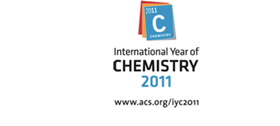EMBARGOED FOR RELEASE | March 27, 2011
TV hits like House and Zula Patrol strive for accurate science & technology
Note to journalists: Please report that this research was presented at a meeting of the American Chemical Society
ANAHEIM, March 27, 2011 — Do television shows like House, Breaking Bad, and Zula Patrol — major sources of information about science and technology for millions of people — try to get it right? Or do they play fast and loose with the facts, images, and nuances that forge public perceptions about science and help shape young people’s career decisions?
Producers and writers for some of television’s most popular medical, crime, science and science fiction shows today said they do strive for accuracy and ask more scientists to get involved and lend a hand in helping TV accurately portray science. It happened today at a symposium titled “Hollywood Chemistry,” held, quite appropriately, as part of the 241st National Meeting & Exposition of the American Chemical Society (ACS), the world’s largest scientific society. Among the shows represented were House, Fox; Breaking Bad, AMC; Battlestar Galactica, Syfy; Eureka, Syfy, and Zula Patrol, PBS.
“Hollywood Chemistry” is one of the special Presidential Events, enabled by Nancy B. Jackson, Ph.D. ACS president for 2011. Donna Nelson, Ph.D., a chemist adviser for the six-time Emmy Award-winning AMC Channel show Breaking Bad, who organized the program with Jackson, said Hollywood needs more scientists to volunteer to vet the scientific accuracy of scripts and storyboards.
“It’s really important for scientists to work with television and movie producers and writers so that when people watch science-based shows and films they are getting accurate information,” Nelson said. She is with affiliated with the University of Oklahoma and the Massachusetts Institute of Technology. “The people who make TV shows and films really are interested in getting the science right. They are serious in striving for accuracy and realism. For example, the credits at the start of Breaking Bad feature symbols of chemical elements from the Periodic Table. The symbols Br and Ba are for the elements bromine and barium as in ‘Breaking Bad’.”
Nevertheless, Breaking Bad producer Vince Gilligan told Nelson that she was the only chemist who volunteered to help with the accuracy of Breaking Bad, set and produced in Albuquerque, N.M. Nelson suspects it might not be due to any lack of a spirit of volunteerism among chemists, but chemists’ reluctance to affiliate themselves with Breaking Bad’s storyline. The series is about a high school chemistry teacher, diagnosed with advanced lung cancer, who seeks financial security for his family by making and selling methamphetamine.
More than ever, Nelson said, with 2011 the International Year of Chemistry (IYC), chemists have the opportunity to help increase public awareness of chemistry’s major role in improving everyday life.
Nelson said that the producers and writers in the symposium discussed how –– with the help of advisers –– they accurately portrayed scientists at work and suggested how chemists and other scientists can help with scripts in the future. In addition, the symposium focused on new ideas and evaluated existing ones for better communicating science to the public.
Presentations in the Hollywood Chemistry symposium include
- Getting the science right: Breaking Bad. Moira Walley-Becket. Breaking Bad, TV show. The challenges of getting the science right while keeping the story interesting. March 27, 4:05 p.m., Anaheim Hilton, California Ballroom C.
- Prescriptions from House, M.D. Kath Lingenfelter, House, M.D.,TV show. Experiences and lessons learned from producing House. March 27, 4:15 p.m., Anaheim Hilton, California Ballroom C.
- Eureka Experiences. Jaime Paglia, Eureka TV show. Experiences from writing and producing Eureka, a TV science fiction series. March 27, 4:25 p.m., Anaheim Hilton, California Ballroom C.
- Thoughts on Zula Patrol, Eureka, and Battlestar Galactica. Kevin Gazier, The Zula Patrol, Battlestar Galactica and Eureka TV programs. Experiences while serving as a scientific adviser to television shows. March 27, 4:35 p.m., Anaheim Hilton, California Ballroom C.
- Hollywood chemistry: Creating perceptions of science that will direct the next generation. Donna J. Nelson, Chemical Engineering, Massachusetts Institute of Technology, Cambridge, Mass. The impact of the way in which Hollywood films and television affects the perceptions of the next generation. March 27, 4:45 p.m., Anaheim Hilton, California Ballroom C.
- Hollywood science: Good for Hollywood, bad for science? Sidney Perkowitz, Department of Physics, Emory University, Atlanta, Ga. There's plenty of science in Hollywood's science fiction films, but how much is real and how much pure Hollywood? March 27, 4:50 p.m., Anaheim Hilton, California Ballroom C.
- Using Hollywood Movies to Teach Chemistry Formally and Informally. Mark A. Griep, Department of Chemistry, University of Nebraska. A project that reviewed chemistry illustrated in 1,500 feature films.
###
Media Contact
During the meeting, March 27-31, the contacts can be reached at:
714-765-2012
Michael Bernstein
202-872-6042
m_bernstein@acs.org
Michael Woods
202-872-6293
m_woods@acs.org


